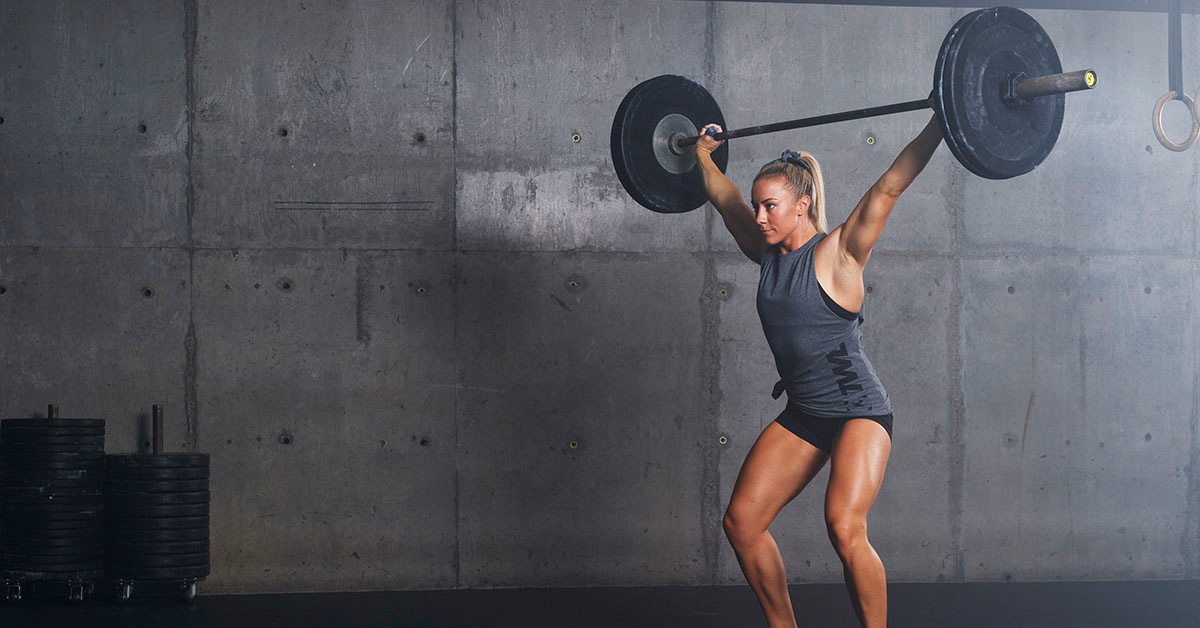Walking lunges. Stationary lunges. Those are the only way to do them, right? Not so fast. Similar to how there are endless squat variations, there are countless ways you can mix up your lunges. Keep reading for nine lunge variations to jazz up your leg routine.
Psst! You might like our blog on the most common squat mistakes and how to fix them.
Shop Now
9 Lunge Variations That’ll Level Up Your Lower-Body Workout
So, how exactly can you switch up your average lunge and add a little variety into your workout? Here are just nine ideas to get you started.
1. Pendulum Lunge
Your body is stationary in this case, but you never stop moving. One foot stays planted while the other alternates between lunging to the front and then to the back.
Pendulum lunges require you to keep your core tight, hips squared, and footing stable. Remember to keep your weight evenly distributed forward and back. While you can push off that moving leg to help you back up, you should still be in control of the movement. Note: Your front knee should not pass your toes! Keep them aligned.
2. Split Squat
Is it a lunge? Is it a squat? We like to think that it’s a little bit of both. In this lunge variation, you assume a split stance and stay put, then bending both legs roughly 90 degrees until the back knee kisses the floor. (Read: Avoid slamming it down. Ouch!)
We love doing split squats for lunge variations because since you don’t alternate sides, you work up a serious burn.
3. Bulgarian Split Squat
This is very similar to the previous split squat, except your back foot is elevated. In doing this, you’re essentially working from a deficit. (More on deficits in a moment.)
You might find that doing these with only your own body weight is more than challenging enough. So, start there. However, if and when you’re ready to kick things up a notch, you can hold dumbbells or kettlebells, or even put a barbell in the front or back. Baby steps, though!
4. Deficit Reverse Lunge
When you work at a deficit, you increase the distance (read: range of motion) that your back leg must travel. That’s why it’s so hard to get out of a deficit reverse lunge. You have to work that much harder!
Start by standing on a plate. Keep one foot planted and lunge back with the other. As this becomes easier, you can gradually increase the height of what you’re standing on.
5. Lunge with a Twist
This is exactly what it sounds like! Let’s say you lunge with your right foot forward. You’re then going to gently twist your torso toward that front right leg. So, whatever leg is in the front, that’s where you turn. Only twist as far to the side as you comfortably can! It shouldn’t be uncomfortable.
You can do this without weight to start, but typically, athletes will hold a dumbbell, kettlebell, or weighted ball to work up a burn in their core. This is an effective full-body exercise that’ll strengthen and tone from head to toe.
6. Jumping Lunge
One thing that the previous lunge variations have been missing? Explosiveness! With jumping lunges, not only are you building strength, but you’re also working on the power that your body is able to produce. Remember that while you can use your arms to help you jump, much of this should come from loading your quads and glutes and then taking off with force.
7. Curtsy Lunge
This might look like a normal alternating lunge, but instead of sending your foot straight back, your legs are going to be slightly crossed. It’s only a minor adjustment, but it renders a very different sensation. Want to up the challenge? Perform these like a split squat (so, doing multiple reps on one side at a time), with added weight, or by slowing down the deficit — meaning the down phase — which you can honestly apply to all of these lunge variations.
8. Three-Point Lunge
A simple way to increase the intensity of your lunge? Turn it into three lunges!
With this variation, one foot will stay planted. With the other foot, you lunge forward, and then you return to your starting position. Then, you lunge to the side, and then return. Finally, you lunge to the back, before returning to your start position. You can keep repeating this on one side at a time, or you can alternate sides.
9. Pass-Under Lunge
If you want to involve your upper body more, another great alternative is the pass-under lunge. Use a small kettlebell, dumbbell, or weighted ball. When you lunge forward, pass the weight under that leg.
This list certainly isn’t exhaustive, and each of these lunge variations can be further tweaked to be executed countless ways — with weight, tempo (meaning you slow down the movement), at a deficit, doing them one side at a time, and so on. Don’t think that you’re limited to plain old stationary and walking lunges. There are endless ways to build lower-body strength by putting a spin on your traditional lunge!
Which one of these lunge variations will you try first? Let us know how it goes.
Don’t forget that knee sleeves will protect your joints, keep your warm, and help you perform your lower-body movements better. They’ll also help to limit post-workout soreness and inflammation. Shop The WOD Life’s selection of knee sleeves today.

















